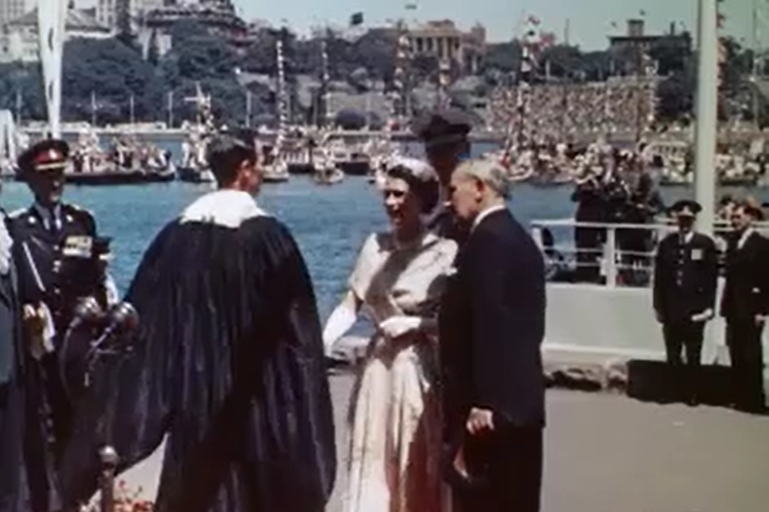As tributes flow in across the globe for Queen Elizabeth II following her death overnight at age 96, it’s clear she will leave a legacy that goes well beyond her royal duties.
The scope of her influence was demonstrated just two years into her seven-decade reign when she toured Australia as a 27-year-old, becoming not only the first only reigning British monarch to visit the country, but also making history as the subject of the nation’s earliest colour feature film.
Directed by Colin Dean, The Queen in Australia documents her two-month official visit, in February and March, 1954, alongside her husband Prince Philip, Duke of Edinburgh, with 16 cameramen capturing visits to each state capital and many regional areas.
Highlights included the young queen opening Parliament in Canberra, attending the races at Royal Randwick, and taking in a surf lifesaving carnival at Bondi Beach.
According to National Film and Sound Archive (NFSA) curator Paul Byrnes, the project was part of a promise made by the Australian Government to Queen Elizabeth II that an official film would be made available soon after her return, so that she could show a record of the visit to her young children, Prince Charles and Princess Anne.
The Queen arrived in Australia on February 3 1954, and the first release prints were expected by the beginning of April. This was a tall order, Byrnes said, given that there was no laboratory for colour processing in Australia.
As a result, the footage had to be flown to Denham Laboratories in London, and the film was edited in the UK in three cutting rooms, with editors working simultaneously.
Three Australian composers wrote music, which was recorded by the Sydney Symphony and sent to London for incorporation. Australian actor Peter Finch, living in London, did much of voice-over work, which was written by Australian writers, Tag Hungerford and George Johnston, with help from English novelist Laurie Lee.
It was produced by English documentary filmmaker Stanley Hawes, who had been running the newly formed Australian National Film Board since 1946.
NFSA chief curator Gayle Lake told IF the decision to use colouring for the first time may have been down to the government “wanting to put their best foot forward” in delivering on their promise, describing it as a “remarkable historical document”.
“It captures a large part of Australian society and I think having a new monarch certainly struck a chord with that Anglo sensibility within Australia at the time.
“Certainly, I think it meant a great deal for the British because it really demonstrated from the perspective of the time that Australia was certainly part of the Commonwealth.
“Apart from its filmmaking, and the way that it was constructed and shot, I think that’s why it still remains an important research tool, in terms of its social and historical meanings and interpretations.”
The Queen in Australia is part of a large selection of films, artefacts and documents from the NFSA that showcase the life of the monarch, who died peacefully at her Balmoral estate in Scotland.
In a statement this morning, Governor-General David Hurley said he joined with all Australians in mourning her passing and in “remembering her lifetime of tireless service”.
“When I reflect on my own memories – she was my Queen for my whole life – I think of Her Majesty’s dignity and her compassion. Her dedication and tireless work ethic. And her selflessness and unwavering commitment to the people that she served. To us.
“Her death will sadden all Australians and will be felt around the world.”


